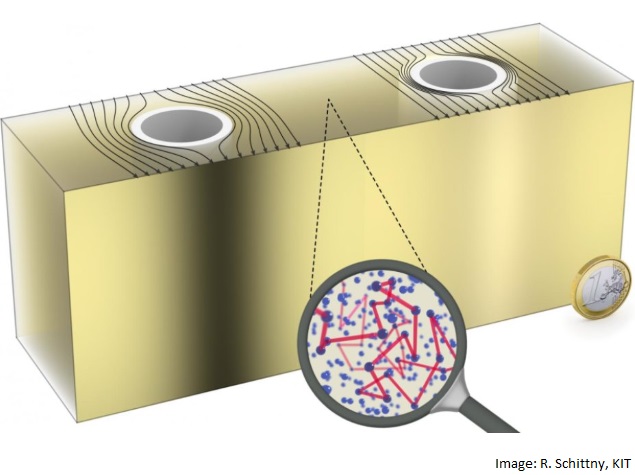- Home
- Science
- Science News
- Portable 'Invisibility Cloak' Invented by Researchers
Portable 'Invisibility Cloak' Invented by Researchers

The cloak works using diffused scattered light and like frosted window panes, it lets light in but hides the source of light.
By scattering light, the material slows down the propagation speed of light waves through the medium.
The light can then be sped up to make up for the longer path length around the hidden object.
"Our cloak takes advantage of the much lower effective propagation speed in light-scattering media," said Robert Schittny, from Germany's Karlsruhe Institute of Technology, who led the project.
The cloak cannot hide a human, but it can make small objects disappear from sight.
In the cloak, the object to be concealed is placed inside a hollow metal cylinder coated with acrylic paint, Daily Mail reported.
The tube is embedded within a block of polydimethylsiloxane, a commonly used organic polymer, doped with titanium dioxide nano-particles that make it scatter light.
If the time light takes to travel through the polydimethylsiloxane block is proportionate to the time it takes to travel through the cloak, the core will become invisible.
Get your daily dose of tech news, reviews, and insights, in under 80 characters on Gadgets 360 Turbo. Connect with fellow tech lovers on our Forum. Follow us on X, Facebook, WhatsApp, Threads and Google News for instant updates. Catch all the action on our YouTube channel.
Related Stories
- Samsung Galaxy Unpacked 2025
- ChatGPT
- Redmi Note 14 Pro+
- iPhone 16
- Apple Vision Pro
- Oneplus 12
- OnePlus Nord CE 3 Lite 5G
- iPhone 13
- Xiaomi 14 Pro
- Oppo Find N3
- Tecno Spark Go (2023)
- Realme V30
- Best Phones Under 25000
- Samsung Galaxy S24 Series
- Cryptocurrency
- iQoo 12
- Samsung Galaxy S24 Ultra
- Giottus
- Samsung Galaxy Z Flip 5
- Apple 'Scary Fast'
- Housefull 5
- GoPro Hero 12 Black Review
- Invincible Season 2
- JioGlass
- HD Ready TV
- Laptop Under 50000
- Smartwatch Under 10000
- Latest Mobile Phones
- Compare Phones
- Vivo Y500 Pro
- Realme GT 8 Pro Aston Martin F1 Limited Edition
- Huawei Mate 70 Air
- Moto G57
- Moto G57 Power
- Motorola Edge 70
- Moto G Play (2026)
- Moto G (2026)
- MacBook Pro 14-inch (M5, 2025)
- Asus Vivobook S16 (S3607QA)
- iQOO Pad 5e
- OPPO Pad 5
- Noise Diva 2
- Noise Halo 2
- Acerpure Nitro Z Series 100-inch QLED TV
- Samsung 43 Inch LED Ultra HD (4K) Smart TV (UA43UE81AFULXL)
- Asus ROG Ally
- Nintendo Switch Lite
- Haier 1.6 Ton 5 Star Inverter Split AC (HSU19G-MZAID5BN-INV)
- Haier 1.6 Ton 5 Star Inverter Split AC (HSU19G-MZAIM5BN-INV)
-
 Goodbye June OTT Release Date Revealed: When, Where to Watch Kate Winslet, Helen Mirren-Starrer Online
Goodbye June OTT Release Date Revealed: When, Where to Watch Kate Winslet, Helen Mirren-Starrer Online
-
 Raktabeej 2 Arrives on OTT Platforms This November: All You Need to Know About this Action-Thriller
Raktabeej 2 Arrives on OTT Platforms This November: All You Need to Know About this Action-Thriller
-
 Usurae Now Streaming on OTT: Plot, Cast, and Everything Else About This Tamil-Language Romantic Drama
Usurae Now Streaming on OTT: Plot, Cast, and Everything Else About This Tamil-Language Romantic Drama
-
 Supernova’s First Moments Show Olive-Shaped Blast in Groundbreaking Observations
Supernova’s First Moments Show Olive-Shaped Blast in Groundbreaking Observations











